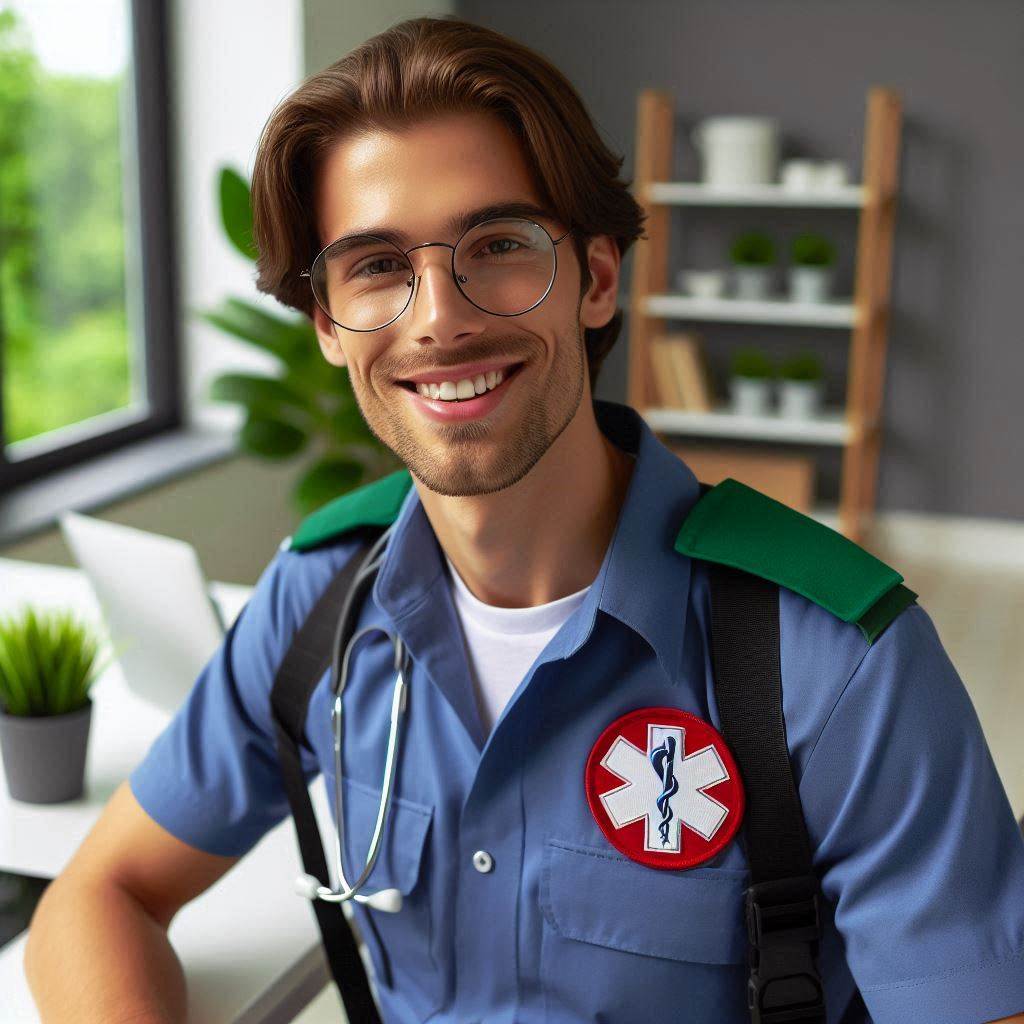Introduction
Emergency Medical Technicians (EMTs) provide immediate care to the sick and injured. They are often the first responders in critical situations.
Their primary role includes assessing patients, providing necessary medical intervention, and ensuring safe transport to healthcare facilities.
Beyond emergency response, EMTs play a crucial role in community outreach and public education.
These initiatives are vital for promoting public health and safety. By educating the public, EMTs can prevent emergencies and improve overall community health.
They provide valuable knowledge on first aid, CPR, and safety protocols, empowering citizens to act in emergencies.
Community outreach programs allow EMTs to engage directly with the public. These programs include health fairs, school visits, and workshops.
During these events, EMTs offer hands-on demonstrations and distribute educational materials. They may also conduct training sessions on life-saving techniques.
EMTs also work with local organizations to address specific health concerns. They might collaborate with schools to teach children about emergency preparedness.
In partnership with senior centers, they can provide fall prevention tips and health screenings. By doing so, they build trust and strengthen community ties.
In essence, EMTs extend their impact beyond emergency care through community engagement.
Their efforts in public education foster a more informed and prepared society.
This proactive approach not only reduces the incidence of emergencies but also enhances the overall resilience of the community.
Through outreach and education, EMTs make a significant, positive difference in public health and safety.
The Significance of Community Outreach by EMTs
Importance of Educating the Public on Basic First Aid and Emergency Response Techniques
Community outreach by EMTs plays a crucial role in educating the public on basic first aid and emergency response techniques.
This knowledge empowers individuals to act promptly in emergency situations, potentially saving lives before professional help arrives.
By teaching community members how to administer CPR, control bleeding, or stabilize a fracture, EMTs equip them with life-saving skills that can make a significant difference in critical moments.
Additionally, educating the public on how to recognize signs of common medical emergencies like heart attacks or strokes can lead to faster response times and better outcomes.
Building Trust and Fostering Relationships with the Community
Community outreach initiatives not only serve an educational purpose but also help in building trust and fostering relationships between EMTs and the community.
By engaging with residents outside of emergency situations, EMTs demonstrate their commitment to the well-being of the community.
Through interactions at local events, schools, or community centers, EMTs have the opportunity to establish rapport with community members, creating a sense of familiarity and trust.
Transform Your Career Today
Unlock a personalized career strategy that drives real results. Get tailored advice and a roadmap designed just for you.
Start NowThis trust is invaluable during emergencies when individuals may feel more comfortable seeking help from EMTs they know and trust.
Encouraging Proactive Healthcare Practices and Early Intervention
Community outreach by EMTs can also encourage proactive healthcare practices and early intervention among residents.
By promoting preventive measures such as regular health screenings, exercise, and healthy eating habits, EMTs empower community members to take charge of their health.
Moreover, early intervention in medical emergencies can significantly impact outcomes and reduce the severity of conditions.
Educating the public on the importance of recognizing symptoms early and seeking prompt medical attention can lead to faster treatment and better recovery rates.
In fact, community outreach by EMTs plays a vital role in educating the public, building trust, and promoting proactive healthcare practices.
By engaging with the community outside of emergency situations, EMTs contribute to creating a safer and healthier environment for all residents.
Read: Building Resilience and Coping Strategies for EMTs
Types of community outreach programs conducted by EMTs
Community outreach programs conducted by EMTs are vital in educating the public and raising awareness about emergency services.
These programs are designed to provide valuable knowledge and skills to community members, empowering them to respond effectively in times of crisis.
Let’s take a closer look at the types of community outreach programs conducted by EMTs:
Hosting CPR and First Aid Training Sessions
One of the fundamental aspects of community outreach by EMTs is hosting CPR and first aid training sessions for community members.
These sessions are essential in equipping individuals with life-saving skills that can make a difference in emergency situations.
By teaching basic techniques such as CPR and first aid, EMTs empower community members to act swiftly and confidently when faced with a medical emergency.
Participating in Health Fairs and Events
EMTs also play a crucial role in raising awareness about emergency services by participating in health fairs and community events.
These events provide an opportunity for EMTs to engage with the public, share information about emergency response protocols, and educate community members on how to access essential services.
By actively participating in these events, EMTs contribute to building a safer and more informed community.
Collaborating with Local Schools
Another important aspect of community outreach by EMTs is collaborating with local schools to teach students about safety measures and emergency preparedness.
EMTs work closely with school administrators to develop educational programs that focus on topics such as injury prevention, basic first aid, and emergency evacuation procedures.
Showcase Your Business Today
Reach thousands of readers actively exploring professional services. Publish your business profile and grow your audience now.
Publish NowBy engaging with students at a young age, EMTs instill a sense of responsibility and preparedness, ensuring that future generations are equipped to respond effectively in emergencies.
In short, community outreach and public education by EMTs are essential in promoting a culture of safety and preparedness within the community.
By conducting various outreach programs, EMTs are able to empower individuals with life-saving skills and knowledge, ultimately contributing to the overall well-being of the community.
Read: Patient Stories: Impact of Genetic Counseling
Target audiences for community outreach efforts
When it comes to community outreach and public education by EMTs, it’s crucial to identify the target audiences to ensure that the message reaches those who need it the most.
Here are some key groups that EMTs should focus on when conducting outreach efforts:
Individuals with chronic medical conditions who may require emergency assistance
EMTs should prioritize reaching out to individuals with chronic conditions such as diabetes, heart disease, or asthma, as they are more likely to experience medical emergencies.
Providing education on how to recognize symptoms, when to call for help, and how to manage their conditions can be life-saving for these individuals.
By engaging with this group, EMTs can empower them to take control of their health and well-being, ultimately reducing the risk of emergency situations.
Parents, caregivers, and teachers who play a crucial role in ensuring the safety of children
EMTs should collaborate with schools, daycare centers, and parenting groups to educate caregivers on basic first aid skills and when to seek medical assistance.
Providing information on child CPR, choking hazards, and injury prevention can equip parents and caregivers to respond effectively in emergencies.
By reaching out to this group, EMTs can contribute to creating a safer environment for children and reducing the incidence of preventable accidents.
Elderly populations who may be more vulnerable to medical emergencies
EMTs should focus on educating the elderly about fall prevention, medication management, and recognizing the warning signs of a stroke or heart attack.
Engaging with senior centers, retirement communities, and assisted living facilities can help EMTs reach this vulnerable group effectively.
By providing targeted education to the elderly, EMTs can help them stay safe, maintain their independence, and improve their quality of life.
By tailoring community outreach efforts to these target audiences, EMTs can maximize the impact of their public education initiatives and help create a safer, healthier community for everyone.
Benefits of Public Education Initiatives by EMTs
Public education initiatives by EMTs play a crucial role in enhancing community safety and preparedness. Here are some key benefits:
Empowering Community Members to Respond Effectively in Emergency Situations
One of the primary benefits of public education initiatives by EMTs is that they empower community members to respond effectively in emergency situations.
By educating the public on basic first aid techniques, CPR, and how to recognize signs of medical emergencies, EMTs help build a community that is prepared to act swiftly when faced with a crisis.
Reducing the Risk of Serious Injuries or Deaths through Timely Intervention
Another significant benefit of public education initiatives by EMTs is the potential to reduce the risk of serious injuries or deaths through timely intervention.
By teaching community members how to quickly assess a situation and provide initial medical assistance before professional help arrives, EMTs can make a critical difference in the outcome of emergencies.
Promoting a Culture of Safety and Preparedness within the Community
Public education initiatives by EMTs also contribute to promoting a culture of safety and preparedness within the community.
By raising awareness about common health hazards, safety protocols, and emergency response procedures, EMTs help instill a sense of responsibility and readiness among community members to handle unexpected situations.
In general, public education initiatives by EMTs offer a range of benefits that go beyond individual skill-building.
These initiatives help create a more resilient and proactive community that is better equipped to safeguard its members during emergencies.
Read: Genetic Counseling for Heart Disease Risk

Challenges faced by EMTs in conducting community outreach
Limited resources and funding for organizing outreach programs
EMTs often struggle with limited resources and funding when it comes to organizing community outreach programs.
These programs require financial assistance to cover costs such as educational materials, transportation, and venue rentals.
Without adequate funding, EMTs may find it difficult to reach out to various communities and provide much-needed education and support.
Language barriers and cultural differences that may hinder effective communication
Another challenge that EMTs face in conducting community outreach is the presence of language barriers and cultural differences.
Effective communication is essential in educating the public about emergency medical services and promoting safety measures.
However, when language barriers and cultural differences come into play, EMTs may struggle to convey important information effectively, leading to misunderstandings and misconceptions.
Overcoming skepticism or fear of authority figures among certain populations
Some populations may harbor skepticism or fear towards authority figures, including EMTs.
This can make it challenging for EMTs to engage with these communities and build trust.
Overcoming these preconceived notions and establishing a positive rapport with the public is crucial for successful community outreach initiatives.
In review, EMTs face various challenges in conducting community outreach programs, from limited resources and funding to language barriers and cultural differences.
Overcoming these obstacles requires creativity, perseverance, and a genuine dedication to serving and educating the public.
Read: How to Prepare for a Genetic Counseling Session
Collaborations and Partnerships to Enhance Community Outreach Efforts
Collaborating with various organizations and agencies is essential in enhancing community outreach efforts.
By working together, EMTs can reach a broader audience and provide valuable education and resources to the community.
Showcase Your Business Today
Reach thousands of readers actively exploring professional services. Publish your business profile and grow your audience now.
Publish NowWorking with Local Hospitals, Fire Departments, and Government Agencies
Partnering with local hospitals allows EMTs to engage with healthcare professionals and share important information about emergency services and public health.
This collaboration can lead to joint outreach events, training sessions, and educational programs for the community.
Fire departments are another important partner for EMTs.
By working together, EMTs and firefighters can coordinate response efforts during emergencies and educate the public on fire safety, CPR, and emergency preparedness.
This collaboration ensures a more comprehensive approach to community outreach.
Government agencies play a crucial role in emergency response and public health initiatives.
By partnering with government agencies, EMTs can access resources, funding, and support for community outreach programs.
These partnerships can also help EMTs advocate for policy changes that benefit public health and safety.
Leveraging Social Media and Digital Platforms
In today’s digital age, social media and digital platforms are powerful tools for reaching a wider audience.
EMTs can use platforms like Facebook, Twitter, and Instagram to share important information, resources, and updates with the community.
By creating engaging content and actively interacting with followers, EMTs can increase awareness and engagement.
Digital platforms such as websites, blogs, and online forums also provide opportunities for EMTs to connect with the community.
By sharing educational materials, videos, and interactive resources, EMTs can educate the public on emergency preparedness, first aid, and public health topics.
These platforms can also serve as a hub for community members to access information and support.
Engaging Community Leaders and Influencers
Community leaders and influencers play a key role in shaping public opinion and influencing behavior.
By engaging with these individuals, EMTs can enlist their support in advocating for emergency preparedness and public health initiatives.
Community leaders can help promote outreach events, share resources, and encourage community members to prioritize their health and safety.
Influencers, such as social media personalities, celebrities, and local figures, have a wide reach and influence over their followers.
EMTs can partner with influencers to spread awareness about emergency services, first aid techniques, and public health campaigns.
By collaborating with influencers, EMTs can amplify their message and reach a larger audience.
Overall, collaborations and partnerships are essential in enhancing community outreach efforts by EMTs.
By working with local organizations, leveraging digital platforms, and engaging community leaders and influencers, EMTs can effectively educate and empower the community to prioritize their health and safety.
Conclusion
Community outreach and public education are essential components of the work of EMTs.
It is through these initiatives that EMTs can educate the public on important health and safety information.
By reaching out to community members, EMTs can empower individuals to make informed decisions in emergency situations.
We must encourage community members to actively participate in educational opportunities provided by EMTs.
It is the responsibility of both EMTs and community members to work together to promote a safer and healthier community.
Through collaborative efforts, we can ensure the success of outreach programs and make a positive impact on public health.
Let us all come together to support EMTs in their mission to educate and serve the community.
Together, we can create a culture of preparedness and resilience that will benefit everyone in the community.
Join us in this important endeavor and help us build a stronger, safer community for all.
[E-Books for Sale]
The Big Book of 500 High-Paying Jobs in America: Unlock Your Earning Potential
$19.99 • 500 High-Paying Jobs • 330 pages
Explore 500 high-paying jobs in America and learn how to boost your career, earn more, and achieve success!
See All 500 High-Paying Jobs of this E-Book
1001 Professions Without a Degree: High-Paying American Jobs You Can Start Now
$19.99 • 1001 Professions Without a Degree • 174 pages
Discover 1001 high-paying jobs without a degree! Unlock career tips, skills, and success strategies for just $19.99!




